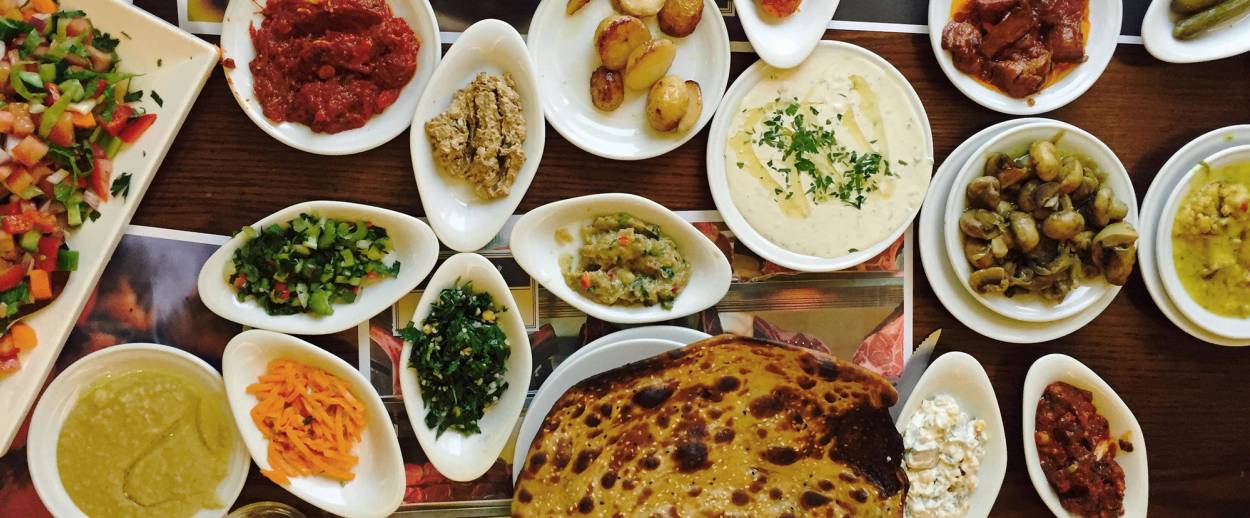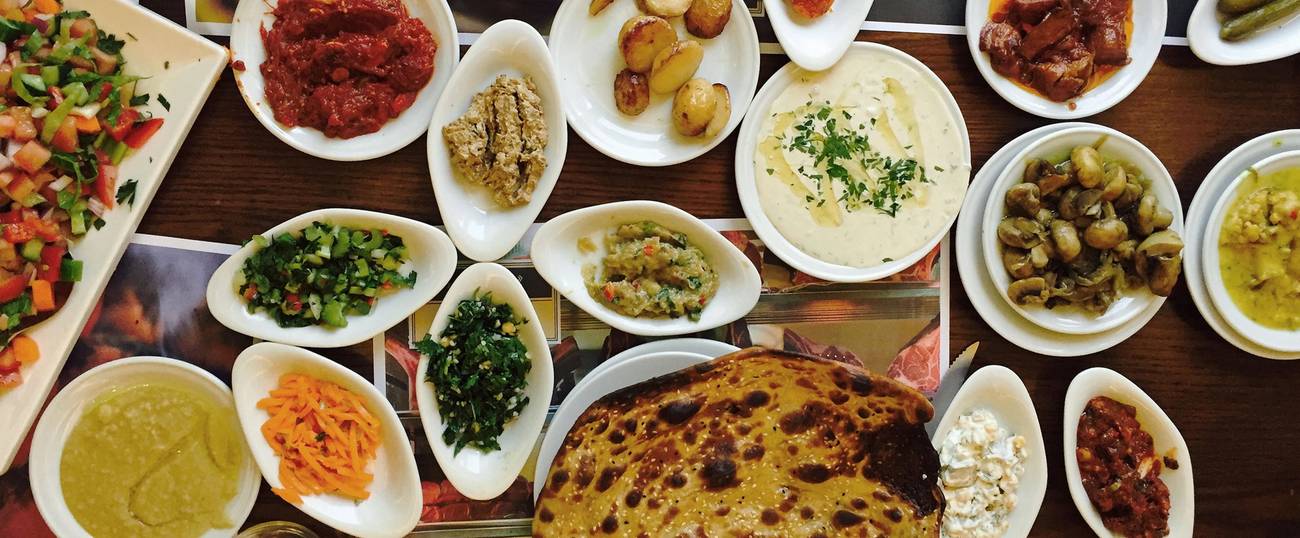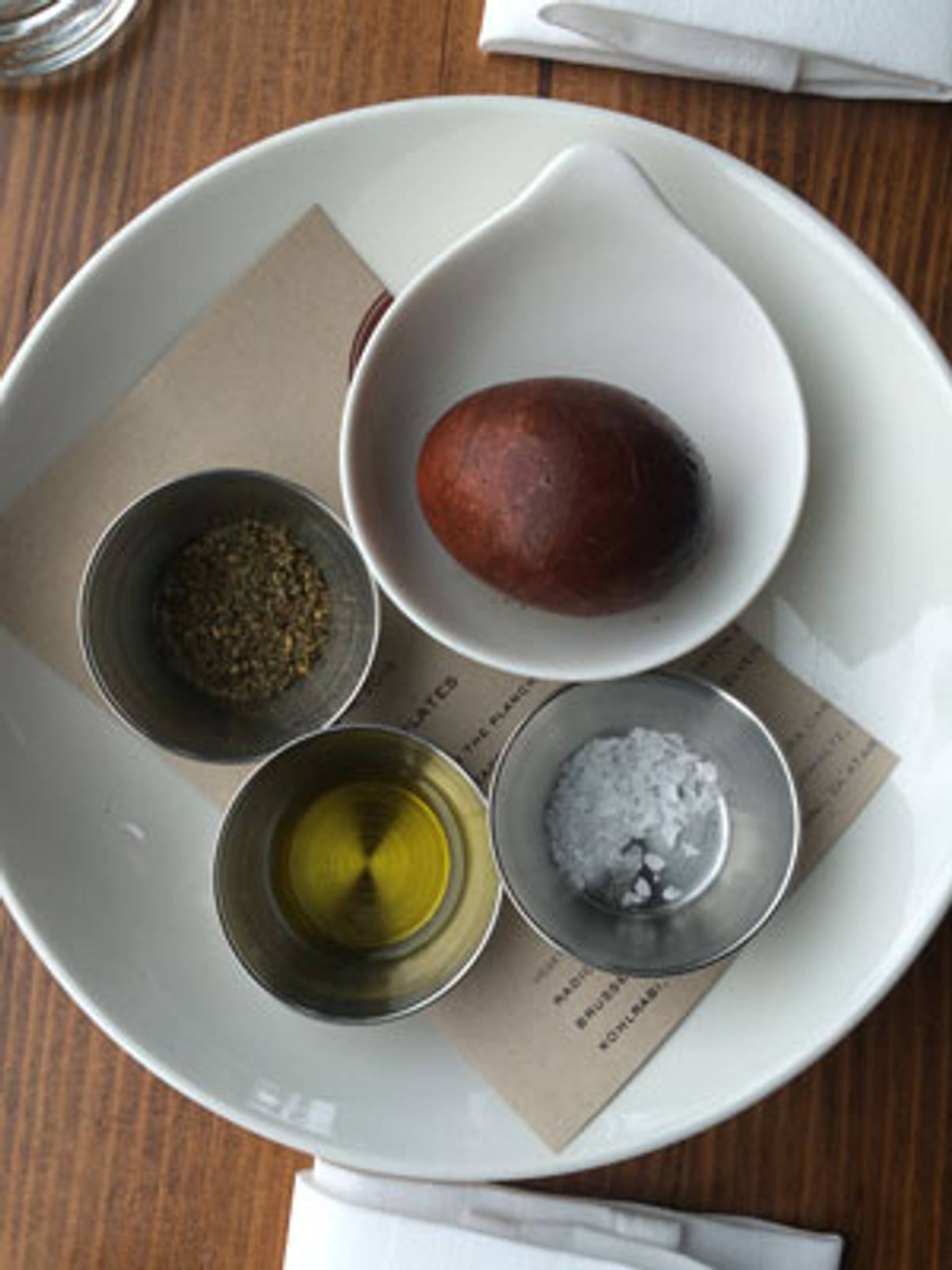Jewish Chefs Bring Their Culinary Heritage Into the Kitchen
At restaurants around the country, Jewish flavors and recipes are reshaping what’s on the menu




Chef Jenn Louis’ eateries Lincoln Restaurant and Sunshine Tavern, based in Portland, Oregon, sling elegantly understated American and soulful gastropub fare, respectively. Critics have called her food simple, flavorful, and celebratory. But there’s one word that has rarely come to mind when describing Louis’ food: Jewish.
That may soon change.
When an invitation to visit Israel alongside a group of other American chefs came her way last spring, Louis was all in. In 1993, before it ever crossed her mind to become a food professional, she lived on a kibbutz in the Arava dessert, tucking into her share of requisite dining-hall meals. This time around, she planned to eat her way around the country in the name of adventure—and research.
The trip, organized by cookbook author and Israeli food expert Adeena Sussman and sponsored by the Israel Ministry of Tourism, led the chefs on a whirlwind odyssey of the country’s culinary offerings. They spent one morning at an artisanal goat-cheese creamery in the Jerusalem hills, then trekked over to Akko to see the ancient fisherman’s port. They toured the storied Levinsky spice market in Tel Aviv with Israeli food personality Gil Hovav, and joined him for a private dinner at his home later that evening. They ate their collective weight in hummus.

Louis arrived home from the trip with a suitcase full of spices and inspiration to match. “I immediately went out and bought a bunch of cookbooks and started scheming,” she told me. At Sunshine Tavern, they began experimenting first with the Iraqi-Jewish fried eggplant and egg sandwich called sabich. “We used housemade pita and a tahini vinaigrette—it was delicious,” she said. Louis has also been playing around at home with lamb meatballs flavored with harissa, feta, and baharat, a Middle Eastern spice mixture. “Elements of that will definitely end up on our menu,” she said.
Louis is hardly alone in her current infatuation with what she called the “soulful and crazy fresh flavors” of Middle Eastern cuisine. Jewish food, both Middle Eastern and Ashkenazi, is enjoying a substantial cultural moment, spearheaded by chefs who put their heritage at the forefront of their menus. Over the last several years, these restaurants—places like Zahav and Abe Fisher in Philadelphia, Mile End in New York City, and Wexler’s Deli in Los Angeles, among others—have revitalized the landscape of Jewish dining in America.
But there is another, under-the-radar wave of Jewish restaurant food emerging right now. Here chefs like Louis are finding ways to incorporate their culinary identities at restaurants that have no outwardly Jewish focus. Unlike Wise Son’s in San Francisco or Balaboosta in New York City, nobody specifically comes to these restaurants to experience Jewish food. And yet there it is. Decidedly Jewish flavors and dishes tangle up with the Italian- or American-, French-, or Vietnamese-influenced dishes. These flavors are not the main event, but they are not hidden either—they are simply part of the repertoire. And that is precisely what makes them so exciting.
***
Take The Sycamore Kitchen, a bakery and café in Los Angeles. There diners find tributes to co-owner Karen Hatfield’s Jewish lineage (think salted caramel pecan babka rolls and toast topped with cured salmon and capers) amidst the rotation of Croque Madame and grilled bacon and mozzarella sandwiches.
Across the country on New York City’s Lower East Side, Sivan Harlap developed a falafel-coated Scotch egg for her pub, Eastwood. The dish blends her Israeli background with her husband’s Scottish roots. And at San Francisco’s Bar Tartine, Chef Cortney Burns finds inspiration in the Old World fried kippers and fermented beet russel that she enjoyed alongside her first-generation grandparents.

“Those are the flavors I still crave,” Burns said. It is no surprise, then, to see the same flavor profiles show up on her menus, albeit in less obvious forms. Her crepes with wine-soaked apples and walnut paste, for example, are a throwback to Passover charoset. ““I was that kid who would eat the entire bowl of the stuff at the Seder,” she said.
The work these chefs are doing to integrate Jewish cuisine is subtle but significant. And for many, it offers a chance to connect. Louis, for example, found a way to honor her Jewish Greek mother-in-law via a bar snack. “She taught me how to make Sephardic coffee and onion-skin-braised eggs like the ones she ate growing up in Thessaloniki,” Louis said. “Now we serve them at happy hour with little ramekins of olive oil, sea salt, and za’atar.”
In New Orleans, Chef Alon Shaya sprinkles the menu of Domenica, the high-end Italian restaurant he runs in partnership with John Besh, with Middle Eastern touches like tahini. And for the better part of the last decade, he and Besh offered a special run of Rosh Hashanah, Hanukkah, and Passover dinners. “For Passover we baked matzo in our wood fired pizza oven,” he said. “It came dusted with sea salt and had a beautiful wood smoke flavor.” A past Hanukkah menu included pear and ricotta doughnuts with salted butterscotch, and a Rosh Hashanah menu featured matzo-ball minestrone.
This past year saw the end of holiday menus at Domenica—but for good reason. The chef was busy launching Shaya, his modern Israeli restaurant, which opened last February. At Shaya, he focuses far more explicitly on the myriad countries and cultures that make up Israeli cuisine. Paying that sort of sustained attention to Jewish food is a new venture for Chef Shaya—and a direct result, he said, of his experiments at Domenica.
Beyond whatever personal connection chefs feel to Jewish cuisine, what is more important is the discovery of how well Jewish food can hold its own. It does not need to be pigeonholed as a special-interest cuisine—it is a worthy team player on a global menu. “Any ingredient or flavor that makes a diner do a sensory double-take makes chefs swoon, and [these] ingredients deliver that reaction in spades,” Sussman said.
Louis found that Jewish-inspired dishes offered the much-needed chance to expand her repertoire. “When I opened Lincoln, the food scene in Portland was all about insular, farm-to-table Pacific Northwest food. And to be honest, I got crazy bored with it,” she said. “It’s nice, but how far can you really push yourself?”
It was a welcome surprise, then, how seamlessly both Middle Eastern dishes like her labneh and carrot hummus with toasted lentils and mint, and Eastern European-inspired dishes like her beef tongue with little gem lettuce and pickled mustard seed vinaigrette enhanced her menus without clouding their focus.
At Bar Tartine, Chef Burns said subtle Jewish flavors pervade her cooking because they are delicious, above all. “We cook with schmaltz all the time,” she said. “It’s a great flavoring agent.” Indeed, the rendered chicken fat adds a subtle layer of Old World panache to everything from vegetable dishes to Burns’ buckwheat dumplings. Still, she prefers that Bar Tartine’s menu nod rather than point toward her heritage. “I have found that the dishes we develop around personal flavor memories are always our most successful,” she said. “But you do not need to feel like you are sitting down at a Seder table to appreciate Jewish food.”
***
Like this article? Sign up for our Daily Digest to get Tablet Magazine’s new content in your inbox each morning.